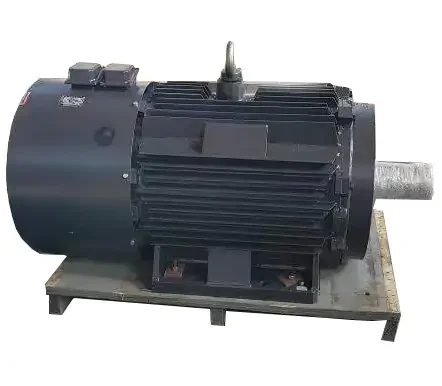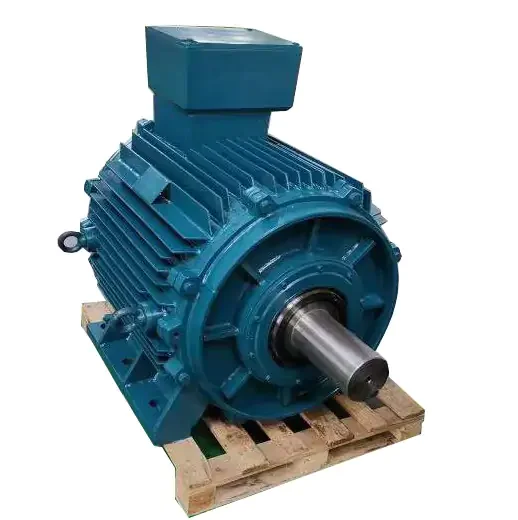Belt conveyor systems are the basic building blocks in most sectors for the transport of materials. They consist of a motor drive-powered rotating belt on idlers and pulleys. The simplest equipment needed includes the pulleys, idlers, belt, and drive. They find applications in extensive usage in the manufacturing, mining, and logistics sectors because they can carry high tonnage material for long distances.
Belt conveyors are made on a very straightforward principle in which the belt goes around two or more pulleys. The material and belt connected are drawn by the motor-driven pulley. The second pulley is fixed and acts as a guide to the belt. The belt is pre-tensioned so that the belt doesn’t slip but travel smoothly. The ease with which this system is designed has made it popular in the conveyance of bulk material.
While in wide application, belt conveyor systems are haunted with an assortment of problems connected to their drive systems. Traditional drive systems are primarily haunted with poor efficiency and maintenance issues brought about by mechanical wear and tear as well as abrasion. In addition, they do not adequately supply automatic torque at low speeds, therefore jeopardizing their operational efficiencies. The problems necessitate advanced drive technologies that not only enhance efficiency but reduce energy consumption as well.
Belt conveyor drive technology has come a long way over the centuries. From the induction motors of the bygone era to the current variable frequency drives (VFDs), with each advancement for more efficiency and control. The last few years have witnessed a technological revolution with Low-speed High Torque Permanent Magnet Synchronous Motors (PMSM) entering the scene with higher torque output and energy efficiency.
Low-speed High Torque PMSM technology is a recent innovation in electric motor technology. The motors are specifically made to deliver high torque at low speed, and therefore they are best utilized in applications like belt conveyors where stability in torque is needed.
The design of PMSMs is established by rotor design and permanent magnet type selection. These are what make them have high torque density and operational efficiency.
The PMSM rotor is designed with inner permanent magnets that offer augmented magnetic flux linkage, hence high torque output to volume. The design keeps cogging torque at its minimum and ensures smooth operation even at low speed.
Optimum selection of permanent magnet material is of utmost importance to performance specification. Neodymium-Iron-Boron (NdFeB) series rare earth magnets are used since they are capable of offering high magnetic strength and heat resistance, which is most important in maintaining performance under varying conditions of load.
Low-speed operation has some advantage of torque supply and efficiency, both of which are essential in conveyor application.
Low-speed High Torque PMSM torque-speed curve is nearly flat over its operating range with a steady torque regardless of speed variation. This is beneficial in the context that it can run stably at startup and loaded conditions without the need for secondary gearing.
PMSMs are efficient in energy due to low electrical losses and maximized magnetic circuit design. They are high efficiency across a wide operating range, thus rendering them energy efficient for long term operation in conveyor systems where the priority is conservation of energy.

The integration of PMSMs in belt conveyor systems considers careful planning at the system design, power transmission system, and the control strategy.
Geared drive and direct drive architectures play a significant role in controlling system performance and maintenance.
Direct drives minimize the in-between gears by directly connecting the conveyor roller shaft with the motor. It is less mechanical in complexity and in need of maintenance but requires careful motor control. Geared drives employ gearboxes to transform speed-torque character but introduce points of failure.
Smooth power transmission from the motor to conveyor rollers is facilitated by high-torque coupling mechanisms. Tight coupling in high-torque application such as in Low-speed High Torque PMSMs is facilitated by stiff couplings, and flexible couplings provide flexibility to accommodate misalignments.
High-performance control strategies achieve high operating efficiency of PMSMs in conveyor applications by enhancing speed regulation as a function of load conditions.
Sensorless vector control techniques allow precise motor speed and torque control without the use of physical sensors. The technique improves reliability, with lower system cost and complexity, by using mathematical models to estimate rotor position.
Load adaptive speed control application promises dynamic motor speed control as a function of real-time variation in the actual load. It ensures optimum energy-saving by not wasting excess power during low demand and supplying adequate torque at the required instant.

Low-Speed High Torque PMSMs on belt conveyor systems possess a very important energy-saving aspect relative to traditional induction motors. Traditional induction motors are constant-speed and require some added components like gearboxes to provide desired levels of torque. The design usually results in energy losses from friction as well as heat dissipation. PMSMs, however, generate high torque at low speeds without gearing reductions and thus eliminating associated energy losses.
PMSMs are more energy saving for different operating conditions. Energy conservation is also caused by the capability to provide the best performance without employing external cooling systems. In comparison, PMSMs conserve energy up to 20% compared to the application of induction motors for the same purpose, making them a suitable option for cost-efficient and eco-friendly industries.
Regenerative braking capability is one significant advantage of Low-speed High Torque PMSMs. Utilizing this characteristic, the motor recovers kinetic energy gained from the conveyor system in decelerating or downhill operations and returns it to electrical form. The recovered power may be fed back to the power grid or utilized locally, improving facility-level energy efficiency.
Regenerative braking also reduces mechanical wear on brake parts of mechanical braking systems but promotes lower operation costs by using less energy wastage. Such an advantage becomes very important with respect to use cases involving recurrent start-stop behavior or varying loading patterns, whereby the normal motors waste significant quantities of energy in these situations.
Operating at low speeds naturally reduces mechanical wear on conveyor components such as belts, pulleys, and bearings. Smooth torque delivery by Low-speed High Torque PMSMs minimizes sudden load fluctuations and vibrations, extending the life of these components and reducing maintenance requirements.
The removal of gearboxes in direct drive configurations reduces even more areas of potential failure, leading to overall system reliability improvement. By eliminating the mechanics involved, PMSMs minimize breakdown possibility and associated downtime, enabling continuous operation even in extreme environments.
Effective thermal management is vital in maintaining motor operation and life. Low-speed High Torque PMSMs are designed with sophisticated thermal management technologies that effectively evacuate heat and prevent overheating during prolonged operating conditions.
Reliable insulation materials and well-designed cooling systems are used in these motors to enhance heat dissipation without compromising efficiency. Thus, they maintain stable operational temperatures under dynamic load conditions and reduce the risk of thermal-based failures and premature service.
ENNENG offers tailor-made solutions through customizing Low-speed High Torque PMSM designs to meet the specific needs of applications. The customization is done through selecting appropriate motor sizes, shapes, and control methods based on individual project requirements.
By working closely with customers at the design phase, ENNENG ensures that each motor is tailored to its specific application. From heavy-duty mining operations to accurate control in manufacturing processes, these tailored designs optimize system performance while providing maximum efficiency.
Customization focus allows ENNENG’s Low-speed High Torque PMSMs to deliver superior performance across numerous industrial applications. The benefits of customization are enhanced torque performance, greater energy efficiency, and reduced maintenance costs—all tailored for specific operating needs.
This approach not only addresses particular problems of particular industries but also provides a competitive edge by way of increased productivity and reduced total cost of ownership. By applying advanced engineering techniques and knowledge of specific industries, ENNENG makes sure that their solutions are customized to fulfill the goals of clients towards sustainable development and operational excellence.